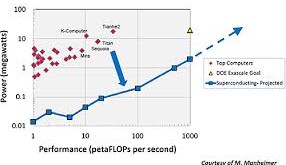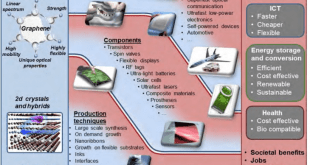Military is integrating Smartphones and tablets into their military operations, to enhance situational awareness and as backup communication in denied situations. Marines are considering airborne operations with tablets, Air Force looks at maintenance efficiencies, they have also widely used for training and education. They are also using ruggedized cases to …
Read More »New counter-terrorism training technologies prepare security forces for every possible terror scenario
Today’s terrorist landscape is more fluid and complex than ever and the threat landscape is less predictable. The United States and our allies face an increasingly complex terrorist landscape, populated by a diverse array of actors employing new technologies and tactics to advance their agendas. The terrorist threat to the …
Read More »Scientists discovering new alternatives to ease demand for scarce Rare-Earth minerals
REEs are a series of chemical elements found in the Earth’s crust that are essential components of many technologies, including electronics, computer and communication systems, transportation, health care, and national defense. Rare Earths Elements (REE) are incorporated into many sophisticated technologies with both commercial and defense applications including smartphones and …
Read More »Next generation Green Supercomputers based on superconducting and superconducting spintronics to enable modern nuclear weapons design, Big data, intelligence analysis and Cybersecurity
Today, silicon microchips underlie every aspect of digital computing. Now Moore’s Law is stuttering, and the world’s supercomputer builders are confronting an energy crisis. But those big gains using silicon seem to have ended, with the high-end Intel Core i7 chips, for instance, have been on computer store shelves for …
Read More »Graphene’s biggest challenge has been high manufacturing cost for high quality , Industry now plans making it by the tonne
Graphene is a 1-atom-thick layer of tightly bonded carbon atoms arranged in a hexagonal lattice. Graphene the world’s first 2D nanomaterial, is widely regarded as the “wonder material” of the 21st century due to the combination of its extraordinary properties. As a single layer of graphite, it is the thinnest …
Read More »Biological Synthesis of Metallic Nanoparticles by Bacteria, Fungi and Plants can be utilized for electromagnetic pulse protection, according to US Army
Nanoparticles have unique thermal, optical, physical, chemical, magnetic and electrical properties compared to their bulk material counterparts. These features can be exploited for next generation biosensors, electronics, catalysts and antimicrobials. Metallic nanoparticles are one important and widely studied group of materials, showing great diversity and many different uses Over …
Read More »Skin patches to diagnose diseases, monitor soldiers’ health, and stress levels in combat
Biomedical sensors present an exciting opportunity to measure human physiologic parameters in a continuous, real-time, and nonintrusive manner by leveraging semiconductor and flexible electronics packaging technology. These sensors incorporate a broad range of advances in microelectromechanical (MEMS), biological and chemical sensing, electrocardiogram (ECG), electromyogram (EMG), and electroencephalogram (EEG)-based neural sensing …
Read More »In the era of Electronic, and Cyber Warfare, Pigeons still provide alternative mode to transfer massive amount of data securely
The homing pigeon is a variety of domestic pigeon (Columba livia domestica) derived from the rock pigeon, selectively bred for its ability to find its way home over extremely long distances. The wild rock pigeon has an innate homing ability, meaning that it will generally return to its nest, (it …
Read More »Fake news is difficult to identify and fix, require new regulations and technologies for combating it.
Fake news or junk news or pseudo-news is a type of yellow journalism or propaganda that consists of deliberate disinformation or hoaxes spread via traditional print and broadcast news media or online social media. This type of news, found in traditional news, social media or fake news websites, has no …
Read More »Low‐Latency, Low‐Power technologies and communications devices are required for IoT Networks
The Internet-of-Things is an emerging revolution in the ICT sector under which interconnecting physical objects communicate with each other and/or with humans over internet in order to offer a given service. The Internet of Things (IoT) is a system of interrelated computing devices, mechanical and digital machines, objects, animals or people …
Read More » International Defense Security & Technology Your trusted Source for News, Research and Analysis
International Defense Security & Technology Your trusted Source for News, Research and Analysis









